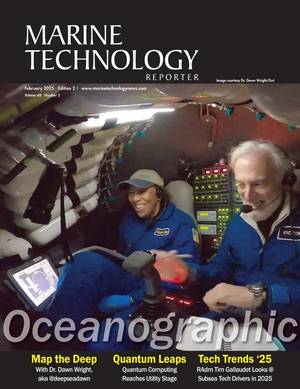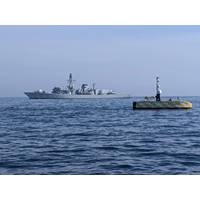
Autonomous Navigation – with or without GNSS
, which is what we call a hybrid acoustic-inertial navigation system, where an INS and acoustics (i.e. the DVL), and a highly accurate pressure sensor, are tightly integrated, physically and algorithmically, to create a single, high performance navigation solution. SPRINT-Nav uses a SPRINT INS and Syrinx DVL. Because the single SPRINT-Nav instrument has an INS inside it, it optimally compensates for the motion of the DVL. It also needs fewer beams to navigate because individual beam observations are used by the INS and it then decides whether it’s going to use or reject them, based on how accurate
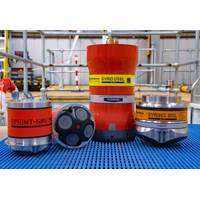
Sonardyne Unveils New Products
. Specifically, Syrinx now has optional acoustic current Doppler profiling (ADCP) capability, as well as dual DVL/ADCP operations, without compromising bottom track. The ADCP data can be viewed and analyzed using the new Echo Observer software.When using SPRINT-Nav, which comes with a tightly coupled Syrinx DVL built-in, the addition of ADCP functionality really comes into its own. Users can get absolute profile velocities in the most challenging conditions while maintaining SPRINT-Nav’s class-leading navigation performance. When bottom track is not available, inertial velocities from SPRINT are
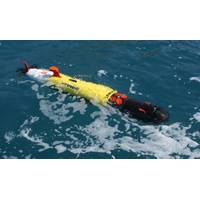
ADCPs & DVLs: Recent Tech Developments
need for speed of sound correction and reduces the drag on an undersea vehicle. This instrument also provides ethernet connectivity, helpful in today’s ever more sophisticated undersea vehicles.SPRINT-NAV functions well, even at extreme angles (Photo Courtesy Sonardyne)Meanwhile at Sonardyne, the Syrinx DVL has been incorporated in an innovative solution - the hybrid acoustic-inertial navigator SPRINT-Nav. Here, the DVL transducers, the inertial motion unit and the depth sensor are housed together, offering a number of advantages. For instance, the individual DVL beams are used to update the INS solution

Sonardyne’s SPRINT-Nav 700 selected for new under-ice AUV
, “NOC selected SPRINT-Nav 700 to meet its requirements for an advanced dead-reckoning system in a single unit as the backbone of the A2KUI’s navigation system. The capability to plug in other navigation sensors to aid the AUV’s position was also critical and a second upward-looking Syrinx DVL is being incorporated to provide tracking on the underside of the ice. A2KUI will also be equipped for acoustic tracking using Sonardyne’s Ranger 2 Ultra-Short BaseLine (USBL) system, which is fitted to the UK research vessels RRS James Cook, RRS Discovery and the new polar research vessel
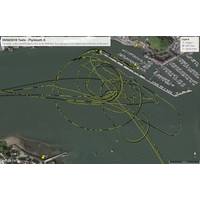
Project to Enable Autonomous Navigation in Denied Environments
, backed by Innovate UK, will also create a common interface structure to allow the different sensors to be fed into one platform and develop an industry standard.The system uses Sonarydne’s SPRINT-Nav, all-in one subsea navigation instrument, which combines Sonardyne’s SPRINT INS solution, Syrinx DVL and a high accuracy pressure sensor, into one tightly integrated unit. The tight integration enables highly accurate acoustic aided positioning by integrating sensor data from the Doppler Velocity Log (DVL) and/or other acoustic positioning inputs. Additionally, it takes in position data provided
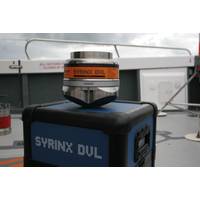
Sonardyne Navigation Chosen for Thai AUV Program
;s new, third generation SPRINT which supports dual gyrocompass and INS operating modes, allowing AUV pilots and survey teams to utilize its navigation output simultaneously. A redesigned lightweight titanium housing provides space and weight savings to help maximize mission endurance. Syrinx DVL provides tightly integrated beam-level aiding for SPRINT, even if one or two DVL beams are unavailable. It is able to operate at altitudes up to 50 percent higher than conventional 600 kHz DVLs with the high resolution performance of a 1200 kHz DVL, all while navigating over undulating and challenging
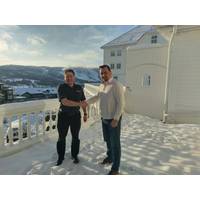
Innova Selects Sonardyne INS, DVL for Resident ROVs
accuracy, precision and reliability of subsea vehicle positioning. Innova’s client will be among the first to benefit from Sonardyne’s third generation SPRINT which is smaller than previous models and features dual data outputs to support Survey and ROV teams working concurrently. Syrinx DVL provides tight beam-level aiding to SPRINT, allowing for unprecedented positioning performance, even if one or two DVL beams are unavailable. It differs from other 600 kHz DVLs on the market in that it offers a high altitude (up to 175 metres) navigation capability normally only available from

Unique Group Expands European Rental Pool
will be one of the first rental companies to own Sonardyne’s recently launched third generation SPRINT which features dual outputs to support Survey and ROV teams, a small titanium housing and upgradeable performance levels to suit users’ operational requirements. Sonardyne’s Syrinx DVL provides tight beam-level aiding to SPRINT INS allowing for unprecedented positioning performance, even if one or two DVL beams are unavailable. As a standalone instrument, fully linear signal processing, low noise electronics and adaptive bottom lock, enables Syrinx to operate at altitudes up

Schmidt Selects Sonardyne Navigation for SuBastian
simultaneously. Its new, lightweight titanium housing also provides valuable space and weight savings that can instead be used for scientific payload or samples. SuBastian is also now one of the first research vehicles in the world to benefit from Sonardyne’s recently introduced Syrinx DVL. DVLs are an important element of any ROV’s navigation system as they enable the vehicle’s velocity and distance travelled to be measured. When tightly integrated with INS, acoustic and depth observations, a true estimate of the vehicle’s position can be calculated.

 February 2025
February 2025
